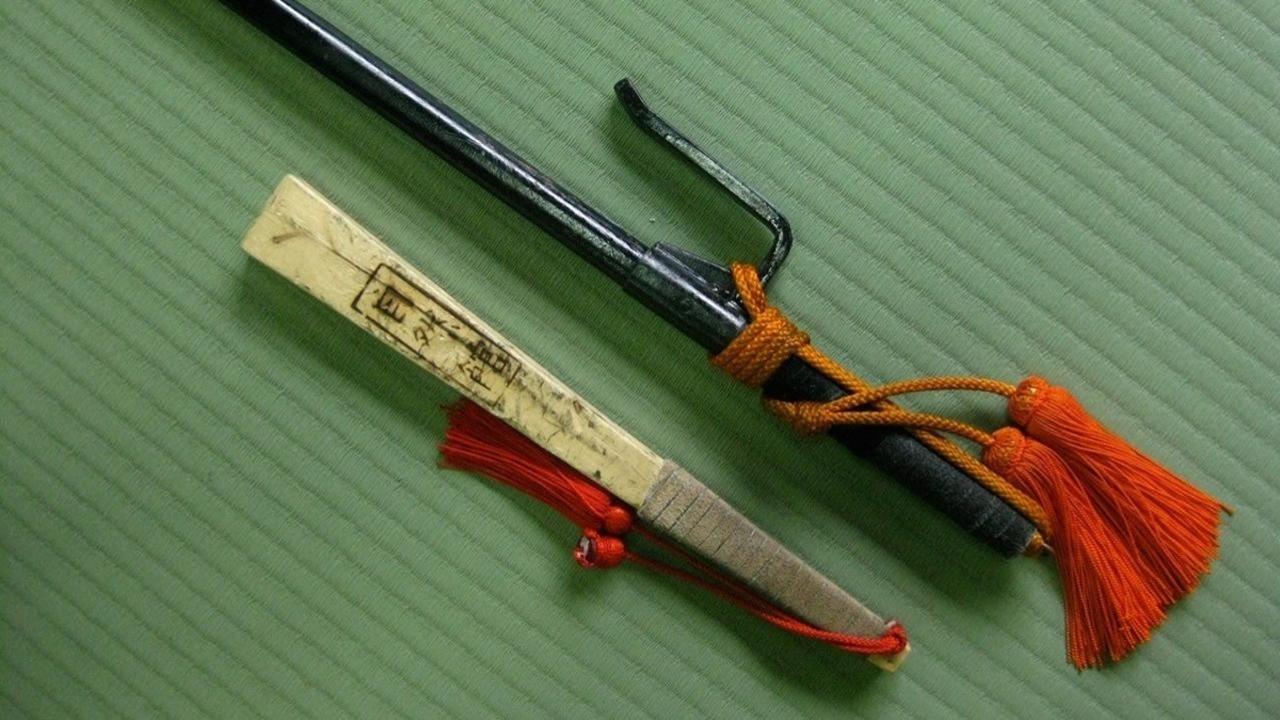Introduction to Tessenjutsu
Dec 17, 2014
At our Dojo, we began Tessenjutsu in September, 2014. Our goal is to complete the Kamae Kihon and Kata by January, 2015. To help support this training and make it more comprehensive, I’ve written this article as an introduction to this commonly misunderstood weapon.
It was previously published in the Jinenkan quarterly newsletter, Seiryu. Now, I hope anyone looking to learn about Tessenjutsu can learn something and be inspired to pick up this weapon and start training.
To begin, it’s important to understand that whether you were a merchant or Samurai, young or old, male or female, the hand-held fan was considered a somewhat necessary item in the daily routine of Japanese life. Aside from keeping one cool in the summer heat, the folding fan, or sensu was also used for different social protocols such as signaling, hiding one’s rudeness or directing the attention of people.
The simple sensu made of Japanese cyprus hinoki wood evolved into more sturdy fans with beautifully carved handles, often times bearing exquisite engravings with attached paper fan decorated with ornate paintings and peppered with gold or silver foil. As time went on, the fan saw different changes according to needs, trends and even regions. Japanese women began to use the fan as a barrier to hide their facial expressions, while businessmen used them to keep trade notes and schedules. It would seem that the fan found it’s place in just about every area of Japanese life, from simple mannerisms about town, daily routines at work to even flagging troops on the field of battle or being flirtatious with a future desire.
For men, the fan was a mandatory piece of traditional dress. And for Samurai, their uniform would be incomplete without one. It only seems natural that such a common item, always on the side of men of war, would find their way into the techniques of combat when a sword was not in reach.
The tessen, or iron fan, quickly evolved beyond the mere demand for more fight-worthy accessory beyond a blade. Samurai were regularly disarmed when in the homes of others, meeting with superiors or in certain places where weapons were not permitted. In these environments, they could still carry what otherwise looked like a common, everyday item. As a result, tessen would not only mature into sturdy handled fans, but short baton like side arms that were crafted to have the appearance of a fan, yet serve a very specific function that had nothing to do with keeping a man cool. It would seem that this model eventually became the ‘in’ style among the Samurai class.

On average, the tessen is one shaku in length, though obviously this varies. There are three basics shapes of tessen that have emerged out of history. The basic folding style or sensu-gata, the style used for signaling troops or gunsen-gata, and the style used for traditional dance and kabuki called the maiōgi-gata. The focus of our study is obviously on what evolved from the sensu style to be used by the bushi.
While the term tessen was commonly referred to the folding style of iron fan, they were pretty costly and could easily get busted up in a fight. So it’s obvious to see why a Samurai of lower rank may opt for the cool look while having the benefit of battle ready weapon were it available. From this demand came the tenarashi-gata, a handsomely crafted cast iron mace disguised as fancy hand fans, while serving wickedly in close combat. Less costly too.
These iron fans, (that weren’t really fans) were obviously heavy. As a result of carrying around a three pound block of iron in one’s belt, the motsu-shaku, or a hard wood version of the iron tessen, came to be. With no difference in form from it’s metal sibling, the wooden tessen was considerably lighter while still being able to inflict suitable damage to it’s subject in the hands of the bushi. Once again, less costly too.
Into and beyond the Edo period, tessen-jutsu found it’s place in nearly every school of Kenjutsu and Jujutsu.
As author Don Cunningham points out,
“The founder of Yagyu-ryu was Kume Dairanouchi Nagamori (? about author’s reference to name), a Sesshu Tsuwano retainer from the area located in modern day Shimane Prefecture and a remarkable martial artist. Originally trained int he Shinkage-ryu style of Kenjutsu, he refined the alternative use of the iron fan as a defensive weapon to prevent unnecessary killing. Due to his desire to never actually cut another man down.” (Secret Weapons of Jujutsu, Pub Budo Kain Ltd.)
I enjoyed this quote as Cunningham’s example allows us to witness how closely aligned Unsui Sensei’s teaching is to the feelings of Nagamori. In the Jinen-ryū tessen-jutsu kihon gata, Sensei uses the word “trap” in nearly every technique. While the techniques are brutal in nature, there is nothing fatally destructive within the techniques. As well, you’ll immediately discover that the tessen is used in partnership with the jutte, a weapon that Sensei defines as a completely non-offensive weapon with a purpose of “Rewarding the good and punishing the evil.”
Given my understanding of this weapon, it’s rich history and the time I’ve spent with Sensei scratching the surface of his knowledge, I hope I’ll be able to offer value to those of you who have already trained this weapon with Sensei. For those who have not, hopefully my articles will inspire you to begin.
In the next article, I will begin the Jinen-ryū tessen-jutsu torite kihon gata. As well, I will try to explain the kamae within the content of the kihon gata.
To learn more about Tessenjutsu training at our Dojo, please visit our online training resource, Budohall.com where you can access hundreds of high quality video lessons and downloads.


